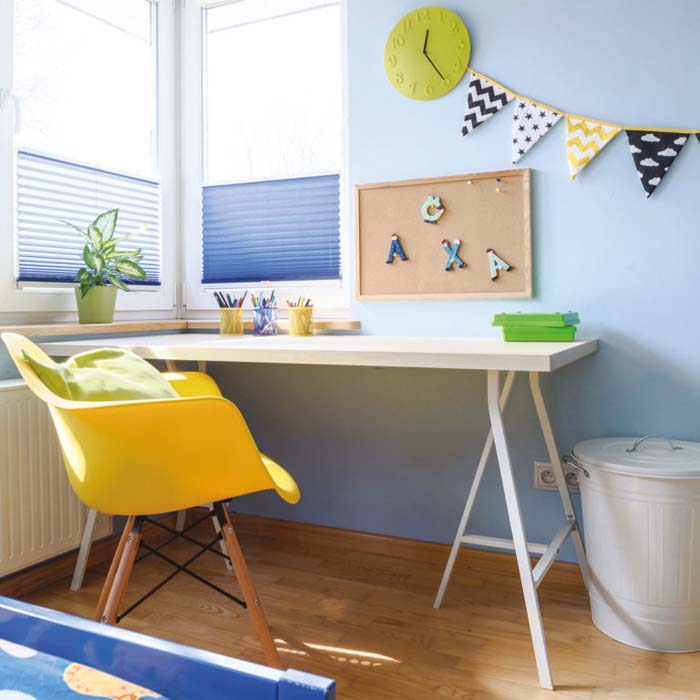No one could have predicted at the start of the lockdown that when the new school year began, it would be with a blended learning model. All over the country, students are now attending school for part of the week, with the rest of their learning happening from home.
It’s been a big change. And it’s one where not only have children proven time and time again how resilient they are but also where everyone has had to adapt their expectations. Some parents have had to suddenly balance home learning schedules with full-time work. Others had to juggle part-time work and caring for younger children, in addition to ensuring that their school-aged ones remained engaged and motivated with home learning.

All of this has been tough, to say the least, especially for children who are used to the social nature of learning at school. But with a little bit of optimism and imagination, this journey can be made a little easier on everyone involved.
Establish a Routine
Knowing what is coming next helps provide the stability that kids need to work. For example, knowing that there is a break after English but before maths can set them up for the day. Sandra, a mum of two and an early years teacher, says that children, particularly younger ones, thrive on routine. You can set up a visual (or written, if they’re older) timetable so they can keep track of their day and what is expected from them. Plus, this also serves as an excellent teaching opportunity by getting the children to read what you’ve written to them or tell the time!
Don’t Panic If You Deviate
There will be days when it’s all too much, and it’s okay on those days to step back and take a breather. Heidi Allen, an associate professor at Columbia University, recently shared on Twitter that when her 11-year-old was struggling to do his maths work, his teacher told him to leave it for the day and play instead. Sometimes rest is all that is needed to be able to get back in line the next day.
Maintain Accountability
Maybe you feel like you’re struggling to motivate your children, that you’re the taskmaster and cracking the whip. But remember that the burden doesn’t have to all fall on you as a parent.
Charlotte, a mum to four, passes some of the responsibility onto her children. She encourages them to plan their workload on their own using home-learning specific journals and planners. By allowing them to write in their journals and decorate them how they see fit, they have the chance to take ownership of them and feel a sense of pride.
Another top tip could be to organise homeschool learning within your child’s bubble, or if that doesn’t work, check-ins with friends in the same grade. Children are great motivators for one another, and often just knowing that someone else is going through the same thing will help them crack on with what has been set.
Appreciate the Differences
Learning at home is not the same as learning at school. School is a social hub where children and teachers can bounce off one another, and energy levels stay high through the school day. Some of what may hold students’ attention for thirty minutes in a school environment would see children glazing over at home.
Similarly, a lesson that takes fifty minutes at school could be condensed to twenty minutes at home. This is because the learning environment is different and what usually needs to be explained in multiple ways to the whole class might only need to be explained once to a child who will then be able to complete the activity.
We need to remember and appreciate that learning at home will have our children facing different challenges to those at school.

Set Up Their Workspaces
Whether your child is the kind who needs to be around others working at the kitchen table or they prefer their room instead, they need a consistent place to work and stay in the right frame of mind. Michael, a dad to three teenage girls, found that each of his daughters needed to have space and quiet away from each other to be able to concentrate. So, he ensured that they all had the tools and equipment they needed in their rooms to allow them to work before coming together to enjoy common breaks.
Incorporate Regular Breaks
Sitting in front of a screen for hours on end can be demotivating. Incorporating regular breaks for food, water, and just to stretch can make a world of difference to concentration levels.
One teacher here in Doha who would only identify as “S” recommends breaking the day down into much smaller chunks than you might think are necessary. Even then, she says you may need to break it down further, depending on the needs of the child. In between each of these smaller segments, allow your children to move, drink water, and get away from it all. Michael, a dad to two, recommends going outside during these breaks whenever possible, especially now that the temperature is down. These breaks really blow away the cobwebs and have everyone feeling fresh and ready to get back down to work!
Praise Their Little and Big Efforts
We often take it for granted that children will arrive on time, armed with the correct tools to learn. In a world where everything has shifted, these seemingly little things don’t always happen without many (many!) reminders. Praise them when they remember to arrive with their books or raise their hands instead of shouting out. Praise them even for greeting teachers and classmates politely on Zoom. Doing this will remind them to keep at it and will keep them motivated.
All kids like praise, whether it’s for being named their class’s “Star of the Week” or by having some amazing work recognised. It’s even the case when they’re celebrated just for remembering to raise their hand. Praise will motivate them to keep trying their hardest.
Adjust Your Expectations
These are not normal times—timetables have been cut in half and schools are trying to fit in all teaching that was “missed” in past months. So, it is only natural for children to be a little behind where others their age group may have been in previous years.
Try not to compare their progress to where they normally “should” be and instead, praise how far they have come during the lockdown and the other skills they have learnt. Ann, a mum to two, says that she had seen a huge benefit to her children’s efforts and a boost to their confidence when she started acknowledging their new skills. Examples of these included managing their workload, using Zoom like pros, managing a diary of online appointments, submitting their work before deadlines, and doing independent research.
Engage with the Technology
Children still want to feel part of the classroom, and many schools have acknowledged this by using various educational applications such as Times Tables Rockstars, Epic, and Drops. These allow them to compete, co-operate, and collaborate with their peers, bringing a little bit of the classroom home.
Indulge in Rewards
At the end of the school day, allow your children to indulge in their “reward”. With screens featuring highly in their home learning, you may find that playing the latest video game or watching the next episode of their favourite series may not have the same allure it used to. Instead, time with family and friends may be higher on their list of priorities because of the absence of the high levels of interpersonal interaction offered by the in-school day. Trips to the swimming pool, bike rides, visits to the park, and baking together might be things your child would like to do after finishing their school day. These would give them something to look forward to and a chance for you to decompress together.
Final Thoughts
Motivating your children when home learning can, at times, feel like an uphill struggle. It’s not always easy to remember that this is an unprecedented time and that we have never experienced schools closing on a global level. Whatever you’re doing and however you’re doing it, you are still doing an excellent job, even on the days where it doesn’t feel like it. These tips from readers, parents, and teachers show how creatively we are all approaching home learning—and that is motivation in itself.



